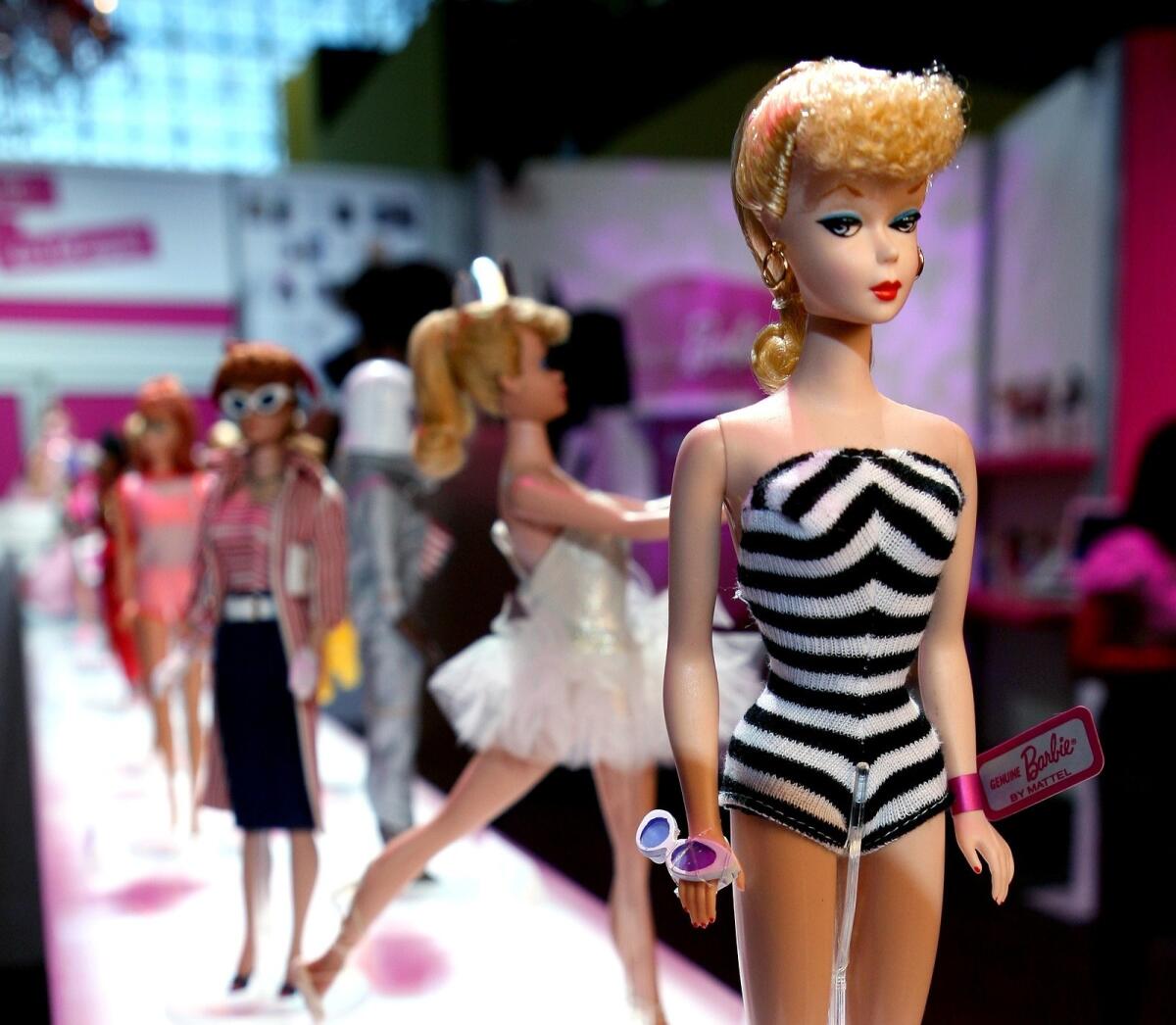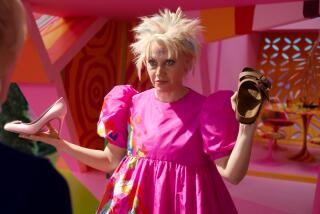How Barbie has transformed over the years
Barbie has changed a lot in the last 57 years.
From her initial curly bangs hairdo to the variety of hair colors, eye colors and body types announced Thursday, the doll’s style has adjusted to the times -- and the pressure to stay relevant as children turn more to technology for fun.
Here’s a look at how Barbie’s face and style have evolved since the doll first arrived on the toy scene.
1959

In 2009, the 50th anniversary of Barbie is commemorated by a lineup of Barbie dolls from different eras.
Barbie was the brainchild of Ruth Handler, who co-founded Mattel in her garage with her husband, Elliot Handler. The doll with the tiny waist, slim hips and large bust first debuted at the New York Toy Fair in 1959 in a black-and-white striped swimsuit. It was a hit -- 300,000 dolls were sold in its debut year, according to Mattel.
1960s
Barbie got a new hairstyle -- and a new boyfriend -- in the 1960s. In 1961, Mattel released Ken, a doll with “molded” plastic hair and clad in red swimming trunks. Barbie and Ken would date for 43 years before taking a brief break in 2004, only to get back together in 2011.
In 1960, Mattel became a publicly traded company.
1970s
In 1971, the doll modeled California fashion with Malibu Barbie -- a doll with straight blond hair and a toothy grin.
1980s
Barbie sported big hair and brightly colored eye shadow during the 1980s in a variety of exercise and glamour outfits. In response to criticism that Barbie and her leisurely lifestyle lacked ambition, Mattel introduced a number of career-themed dolls, including a McDonald’s waitress, an astronaut and a veterinarian.
The 1980s were also the beginning of a more diverse Barbie lineup. Mattel introduced the first black Barbie in 1981.
In 1988, Mattel sold 20 million Barbie dolls and friends. Sales crushed the competition, causing several rivals, including Hasbro Inc., to stop production of their own Barbie-like lines.
1990s
Barbie embraced the 1990s with long crimped hair and leggings. But 1999 marked the first time in more than a decade that the doll would end the year on a sales downturn.
Jill Barad, Mattel Inc.’s chairman and chief executive at the time, attributed the slump to an industry-wide decline in orders from retailers, who were worried about excess inventory.
2000s
Barbie started to face stiff competition from MGA Entertainment’s Bratz dolls, which came on the scene in 2001. Compared with the Bratz dolls, which often had heavily made-up faces and pouty lips, some thought Barbie looked too wholesome.
2010s
After years of criticism that Barbie’s looks did not reflect her diverse audience, Mattel, struggling to boost sales, introduced the Fashionistas line in 2015. The line includes more ethnically diverse dolls.
The toy company doubled down on that idea, saying Thursday that this year it will roll out dolls with three new body types, seven skin tones, 22 eye colors and 24 hairstyles.
For more business news, follow @smasunaga.
READ MORE: Barbie’s new diverse looks are ‘absolutely necessary’ for the brand’s future







